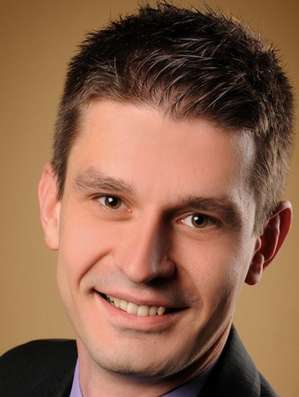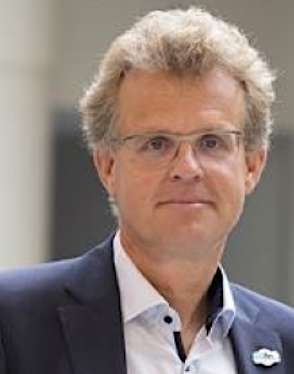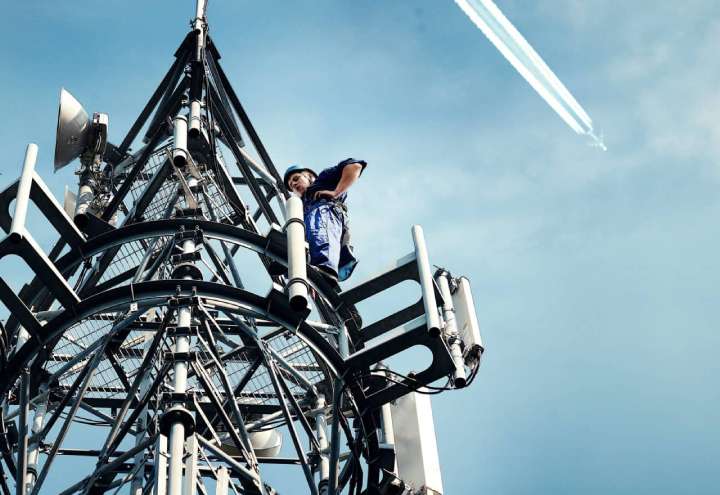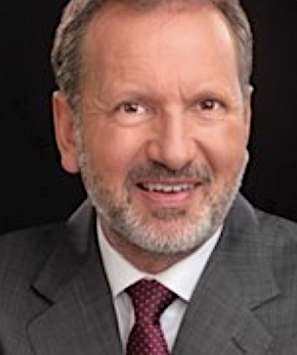 Georg Heinecke, Porsche Consulting. (Source: ESA)
Georg Heinecke, Porsche Consulting. (Source: ESA)
PARIS — Representatives of Europe’s automobile and space industrial sectors cited the risk that the United States and China, both with software-driven car manufacturers and broadband constellations on the way, will set global technical standards for connected cars that will leave Europe at a disadvantage.
They said Europe has already lost the race for first-generation broadband constellations and that the focus should be on a second-generation infrastructure that will match U.S. and Chinese efforts.
“By the end of the decade, autonomous driving and connectivity will converge and you will need 100% connectivity” without unconverted spots along most routes, said Georg Heinecke, head of the space practice at Porsche Consulting.
“In the auto and space industry, China and the U.S. are pulling ahead. The question is not: Can we still be first? The question is how to set up an infrastructure that will be competitive when the second generation comes along. [Amazon’s] Kuiper and [SpaceX’s] Starlink will be first-generation test cases.”
Heinecke was addressing the Nov. 27 “ESA Commercialization Days: Transportation” conference, held at ESA’s Estec technology center in Noordwijk, Netherlands.
Panelists cited Europe’s Galileo positioning, navigation and timing network and the Copernicus Earth observation constellation as examples of where Europe caught up to what other regions, mainly the U.S., were doing.
 Johannes Springer, 5G Automotive Association and Deutsche Telekom. (Source: ESA)
Johannes Springer, 5G Automotive Association and Deutsche Telekom. (Source: ESA)
“PNT from space is solved, and Earth observation too. Where we suffer is satellite communications,” said Johannes Springer, Deutsche Telekom’s representative at the 5G Automotive Association, which includes U.S., European and Asian auto makers.
“The U.S. is setting up its own network for satcom, relying on 5G and the coming 6G. It’s the same in China, which will set up their own constellation,” Springer said. “We need to have our own constellation in Europe for the car industry, to be used with the already used terrestrial infrastructure.”
The European Commission and the 22-nation European Space Agency (ESA) have committed funds to the Iris2 multi-orbit secure satellite telecommunications network, which is designed as a public-private partnership with industry.
Deutsche Telekom is a member of the consortium of companies, called SpaceRise, that is negotiating an Iris2 contract with the Commission, which has said it wants to be able to sign a contract in February.
 Deutsche Telekom builds the ground network for the Inmarsat — now Viasat Inc. — European Aviation Netowrk providing terrestial and satellite links for in-flight connectivity in Europe. (Source: Deutsche Telekom)
Deutsche Telekom builds the ground network for the Inmarsat — now Viasat Inc. — European Aviation Netowrk providing terrestial and satellite links for in-flight connectivity in Europe. (Source: Deutsche Telekom)
Deutsche Telekom has also been working with mobile satellite services provider Inmarsat, now owned by Viasat Inc., on the Inmarsat European Aviation Network offering a hybrid space and terrestrial in-flight connectivity service in Europe.
Springer said his company’s history with the space sector has shown space companies’ reluctance to adopt terrestrial standards even when they are available.
“Very often — and I can say this after collaboration with the space industry for 20 years — the satellite industry has problems with standards. They are creating encapsulated systems, not taking into account that something is already there,” Springer said.
Estimates are that 90% or more of all major European roadways are already connected to the terrestrial wireless network. It’s the last 10% that will depend on satellite systems, which will also provide backup in the event of an outage on a terrestrial node.
“I want to organize a system that creates added value, and to integrate this system into an existing ecosystem that is based on standards,” Springer said. “In the terrestrial world, we have standards — 3GPP, 5G and going to 6G.
“We need to talk 5G on the satellites. This is exactly what Starlink is seeking to do, and Chinese colleagues are doing the same. Europe needs to incorporate this to create a business value for the telco and automotive industries.”
Creating value for the satellite operators — Airbus Defence and Space, Eutelsat, Hispasat and SES are also in the SunRise consortium — is an Iris2 goal because it will incentivize these companies to keep suppler costs down.
Satellite prime contractors Airbus Defence and Space, Thales Alenia Space and OHB SE are SpaceRise members expecting to win contracts to build part of Iris2, which is expected to include satellites in low LEO, high LEO and MEO orbits, in addition to satellites in geostationary orbit that are already built for military use by multiple European Union governments.
 Lutz Bertling, OHB SE. (Source: ESA)
Lutz Bertling, OHB SE. (Source: ESA)
Lutz Bertling, a member of the OHB management board, said Europe, the United States and some Asian nations have an interest in aligning their standards or risk letting China — which is already produces more than a quarter of all cars built each year — set the connected car standard. China has been moving quickly on electric car production and is a large market for Tesla vehicles.
 Torsten Welte, SAP. (Source: ESA)
Torsten Welte, SAP. (Source: ESA)
Torsten Welte, global VP and head of the Aerospace business unit at SAP, agreed that the US, especially Tesla, and China “build the [automobile’s] center core as a software piece and then coordinate components around it. European OEMs still have a lot of boundaries, with companies doing things on their own rather than collaborating to improve the innovation cycles.”
After standards, Bertling said Europe and like-minded regions needed to protect radio frequencies that in the future will be key for connected vehicles, including Ku- and Ka-band.
“S- and L-band are good for narrowband and good for 2026 and 2028, but we will go to broadband and we need to secure frequency rights,” Bertling said. “If you don’t have them, you can dream about connectivity but you won’t have the [orbital] slots.”
Bertling said Iris2 and EU legislation like the European Data Security Act should give Europe an advantage over Starlink and Kuiper. He did not mention it, but the German government earlier this year issued a decision that said space-based connectivity was a strategic asset that could not be left to China.
“We need a hybrid space component with global coverage, which means all of Europe, which Kuiper doesn’t have, and it needs to provide a guaranteed service, which Starlink doesn’t do,” Bertling said.
Amazon has said Project Kuiper coverage will be from 56 degrees north to 56 degrees south latitude. Starlink up to now has declined to offer service-level guarantees.
